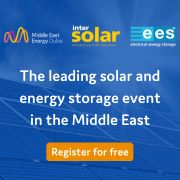Chemical purity is important to the manufacture of photovoltaic cells for many critical process steps, and acknowledging this, the Semiconductor Equipment and Materials International Corporation (SEMI) PV Group has established standards for gases specifically for the photovoltaic industry. PES investigates.
The standards outlined by SEMI include PV6-1110 for bulk argon, PV7-1110 for bulk hydrogen and many others. Impurities in the gas can have various negative effects on photovoltaic cells, such as causing inclusions during the ingoting process, or reducing the effectiveness of the antireflective coating deposited using plasma enhanced chemical vapor deposition (PECVD). The impact of impurities is dependent upon the cell design and the stage at which the impurities are introduced. Due to this, the benefit of using improved gas purity is typically measured for a specific process.
Gas purity can be achieved by purchasing high purity gas from gas suppliers and implementing best practices for gas delivery to ensure integrity of the gas supply. Higher purity gases are more expensive; and often, it is more cost effective to buy industrial grade gas and then use point-of-use purifiers to improve the gas quality for contamination-sensitive applications.
To further reduce the cost of gas consumption, there is the option to recycle or reclaim used gases in some applications. The largest application for this in the photovoltaic industry is for the argon purge gas used during the ingoting process. In this article, we will review the technology used for gas purification, the major applications within the photovoltaic industry, and cost effective solutions for gas contamination challenges.
Technology
Gases are purified using a variety of methods. Strictly speaking, most of these techniques are gas separations in which one gas is separated from other gases based upon specific gas molecular properties. The most prevalent method for gas separation is distillation. This technique is used to produce bulk gases like nitrogen, oxygen and argon from the atmosphere. In this method, the gases are separated by employing cryogenic traps which capture the molecules based on their boiling point. This is an energy intensive technique which is typically only economical at larger scales and where the majority of by-products are sold.
The other major technique can be broken into three major categories: membrane separation, physical adsorption and chemical adsorption. Membrane separation techniques use the differences in the relative molecular sizes to separate molecules. Smaller molecules pass through the membrane while the larger ones are excluded. This is also most effective at larger scales and for higher impurity concentrations.























